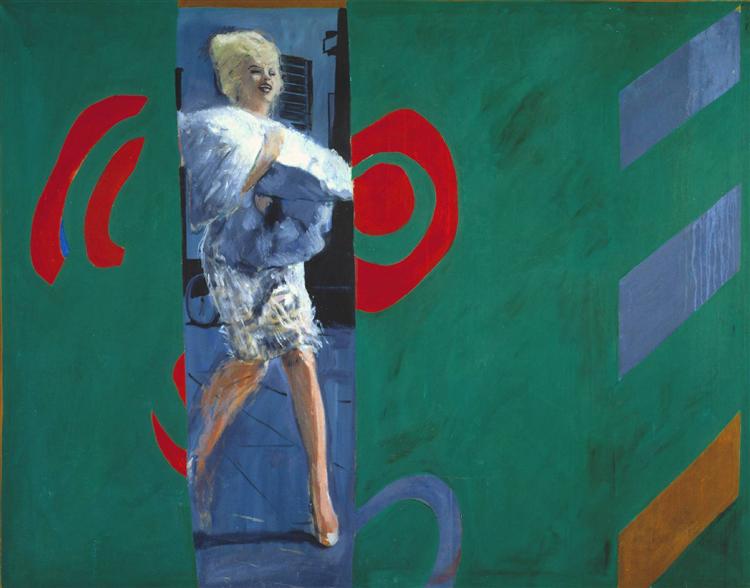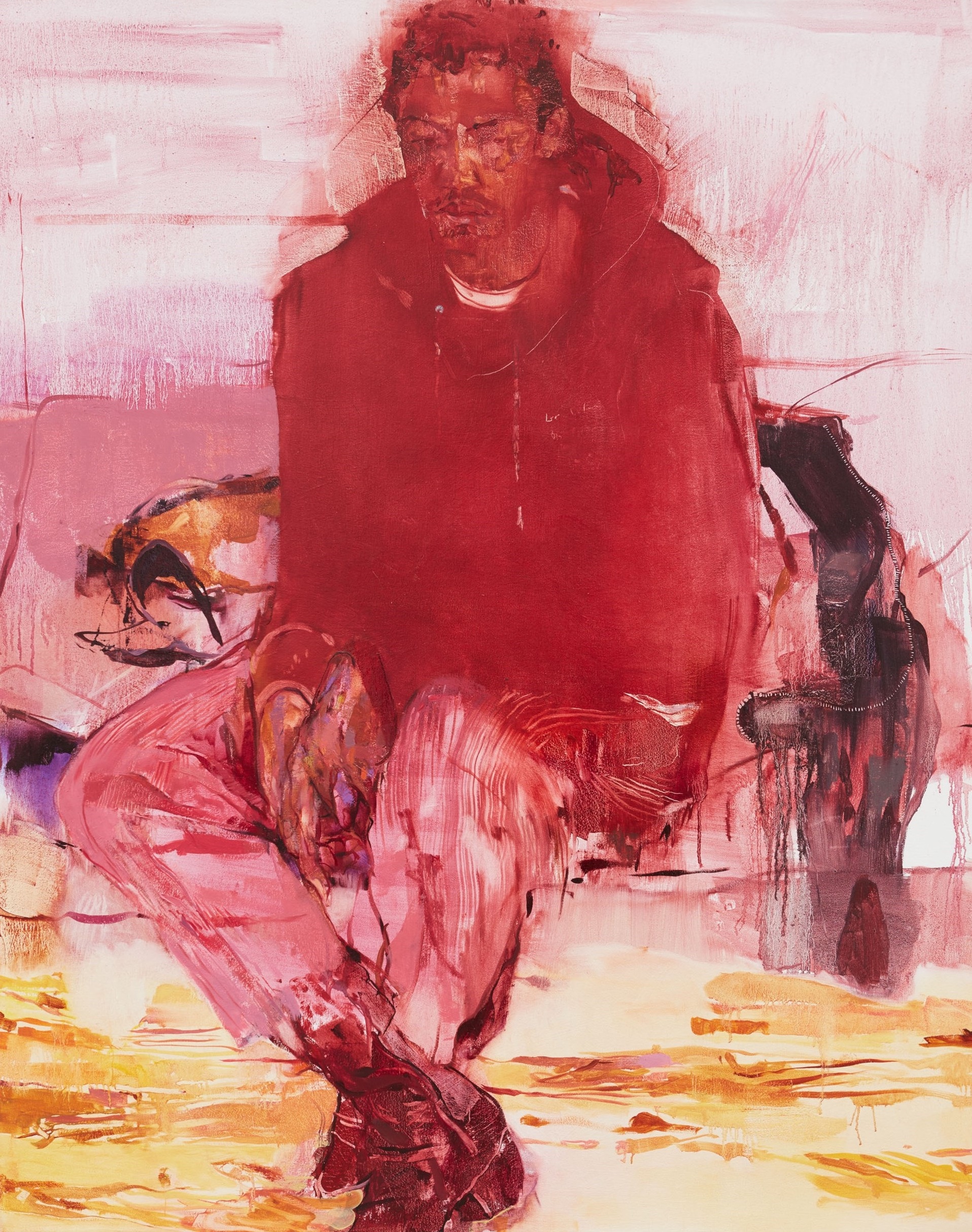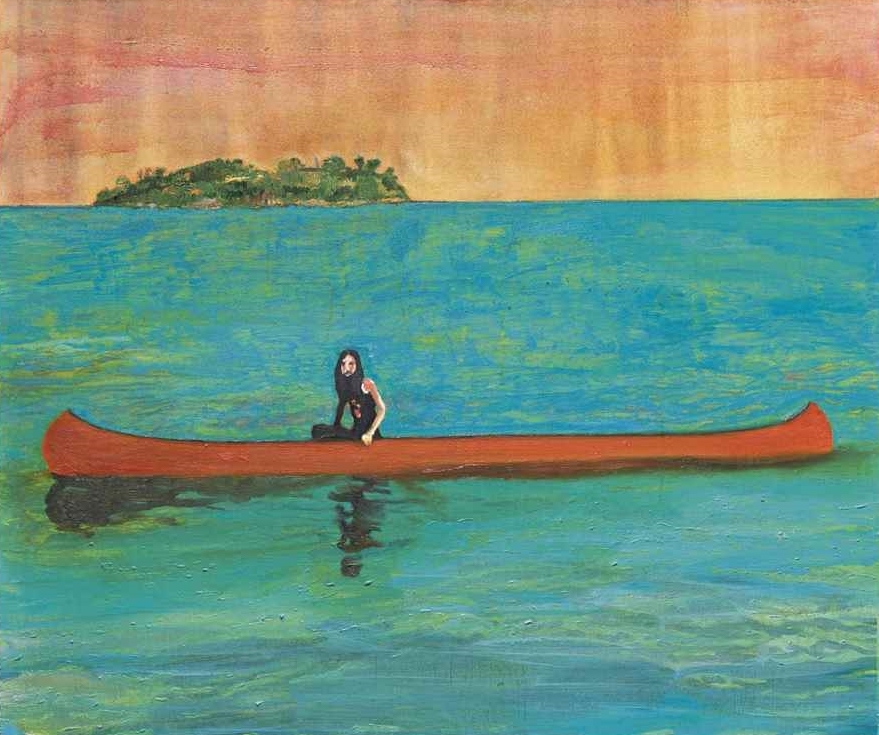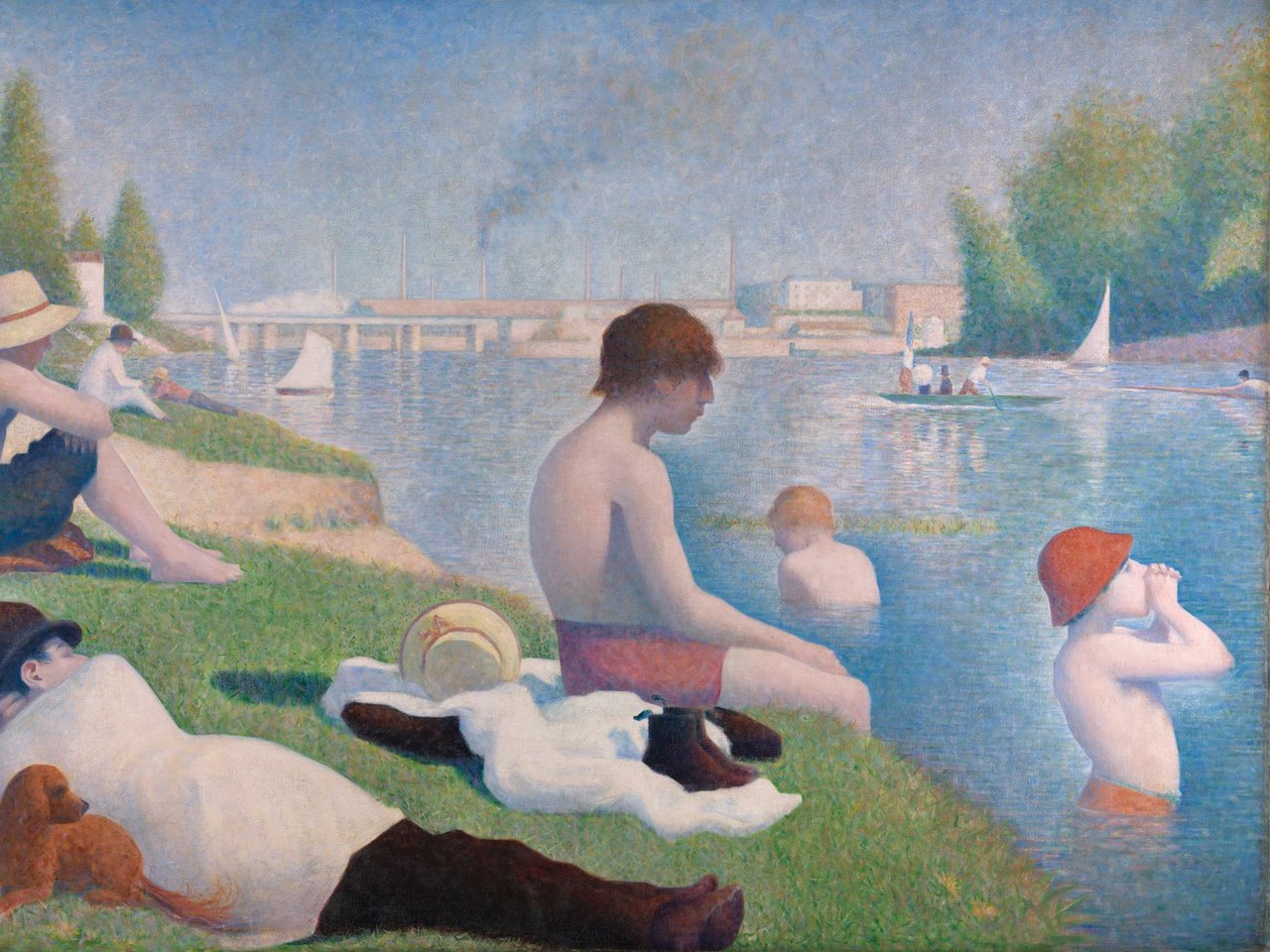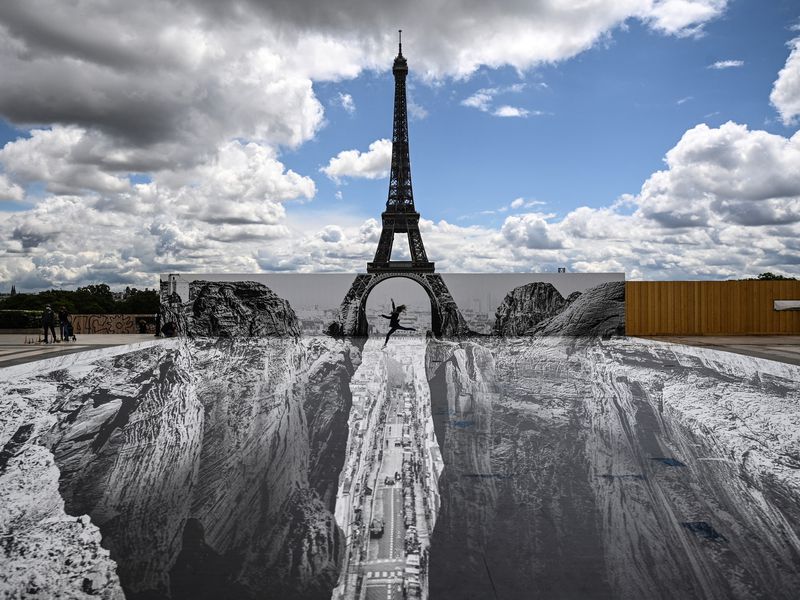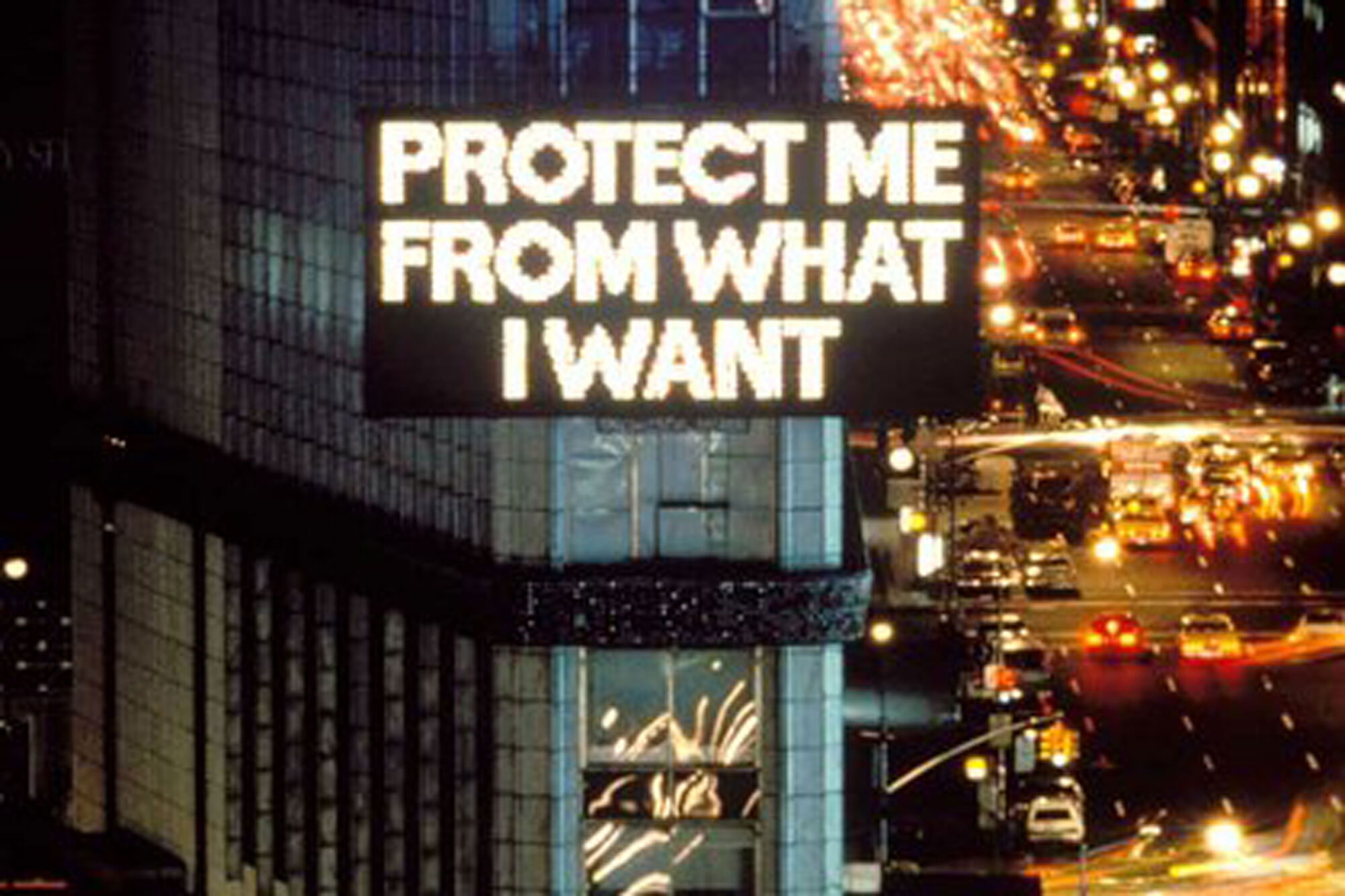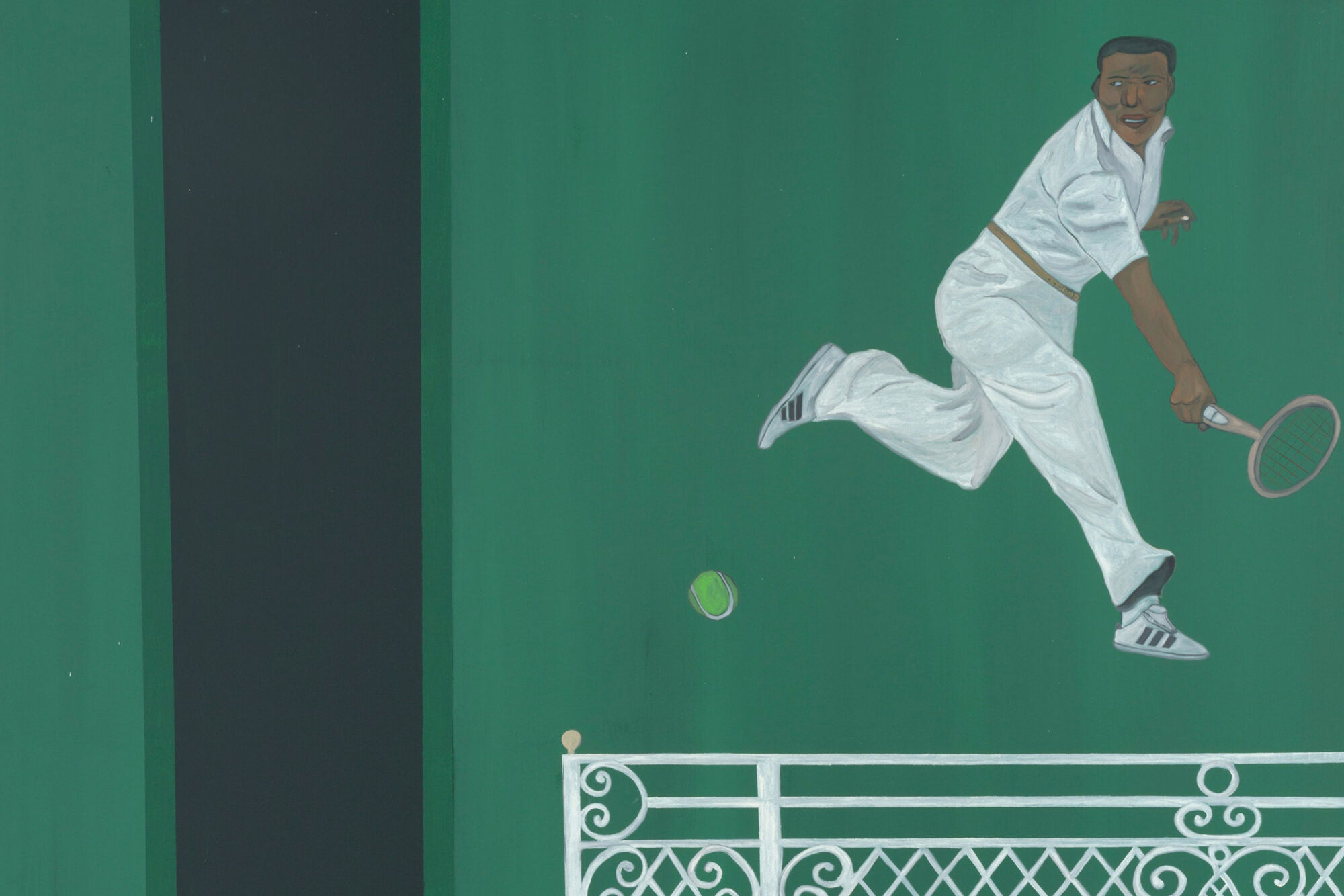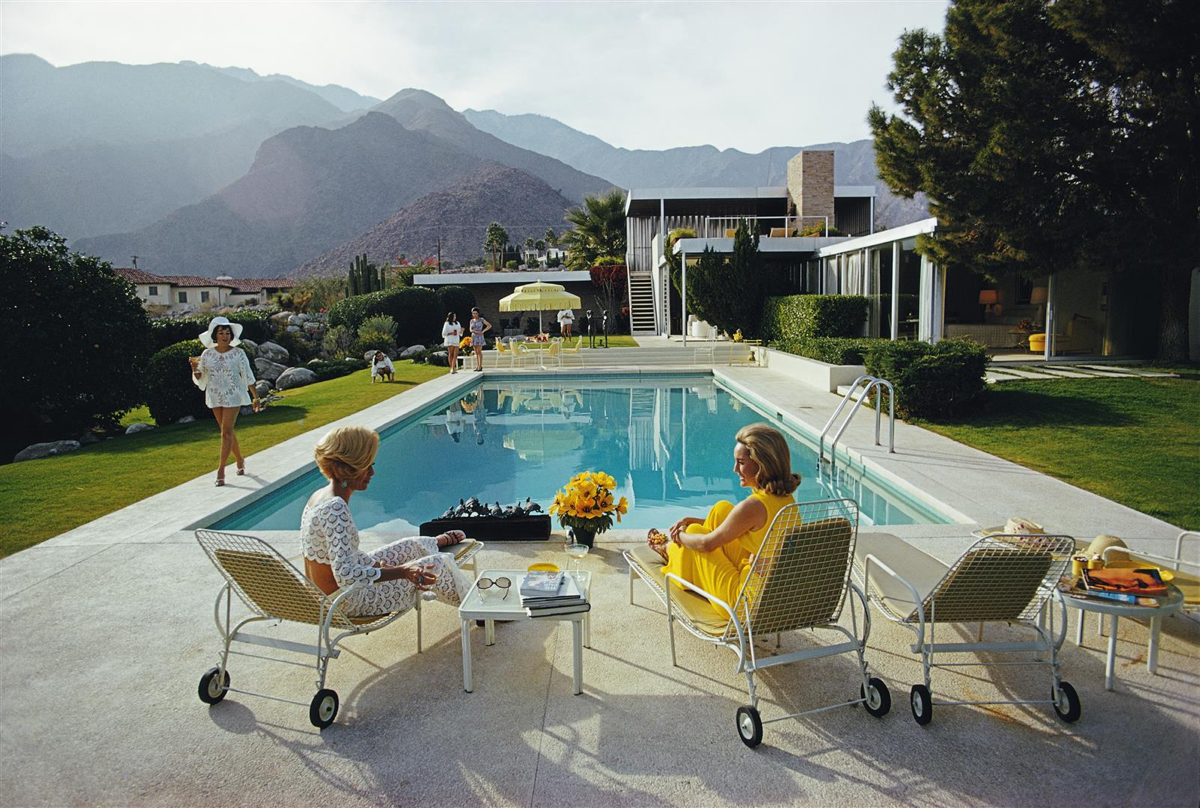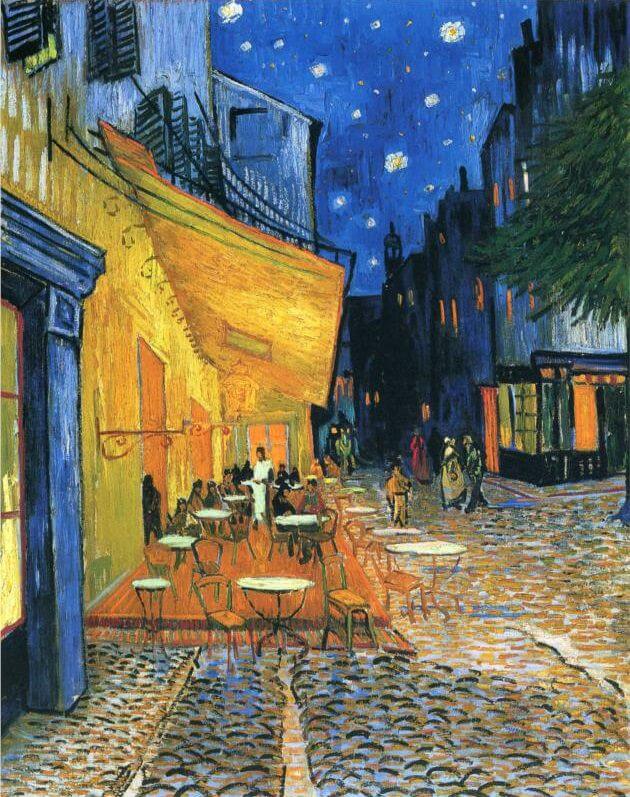
Dream Vincent van Gogh, Café Terrace at Night, 1888
Ablaze with brilliant oranges, yellows, greens and deep, dark blues, Café Terrace at Night captures the warm energy of an alfresco evening in Arles. The funnel-like perspective draws the eye along the cobbled street to the populated terrace, the shadowy tower of a former church and beyond to the star-filled sky.
Executed in September 1888, it’s the first painting in which Van Gogh experimented with bewitching starry backgrounds. Interestingly, for some, it also references Da Vinci’s Last Supper. (Look closer and you’ll see multiple cross-like shapes and a long-haired figure surrounded by 12 individuals.)
This religious allusion is not uncharacteristic. Born to a Protestant minister, Van Gogh would always struggle with the fervency of his faith. ‘When I have a tremendous need for — shall I say the word —religion’, he wrote to his brother, Theo van Gogh, in the autumn of 1888, ‘I go out and paint the stars.’
Executed in September 1888, it’s the first painting in which Van Gogh experimented with bewitching starry backgrounds. Interestingly, for some, it also references Da Vinci’s Last Supper. (Look closer and you’ll see multiple cross-like shapes and a long-haired figure surrounded by 12 individuals.)
This religious allusion is not uncharacteristic. Born to a Protestant minister, Van Gogh would always struggle with the fervency of his faith. ‘When I have a tremendous need for — shall I say the word —religion’, he wrote to his brother, Theo van Gogh, in the autumn of 1888, ‘I go out and paint the stars.’
Share




